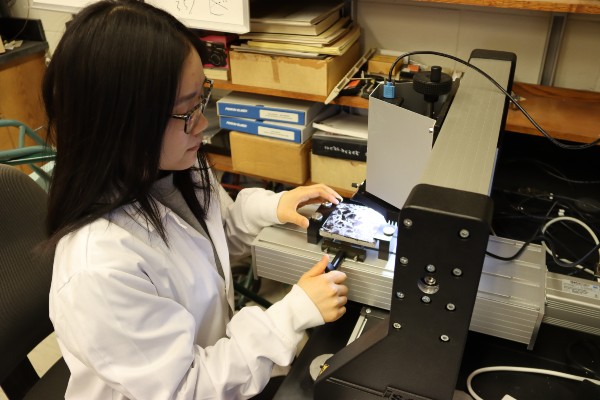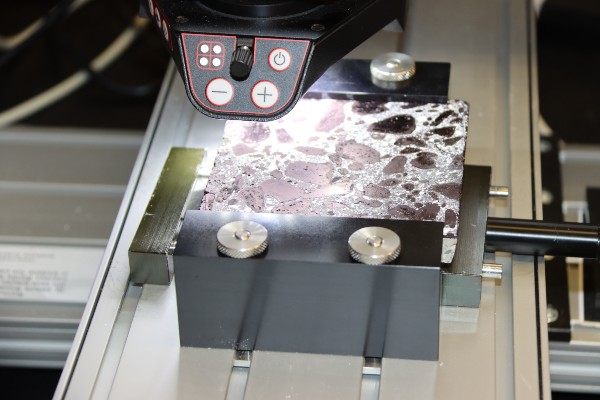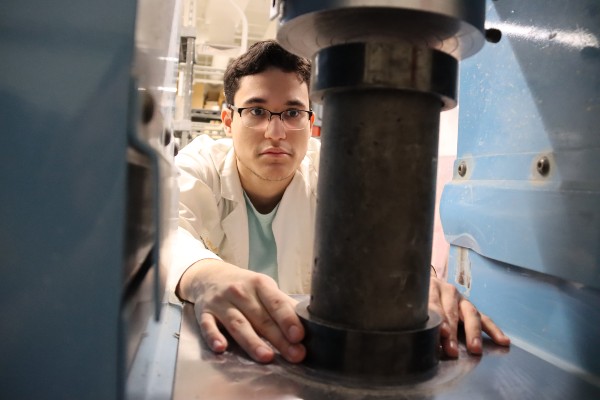Concrete Improvements
Researchers innovate applications to improve durability and lower carbon emissions in vital building material
In both its makeup and durability, Purdue University is researching how to improve concrete.
“Concrete is used in just about every part of development,” James H. and Carol H. Cure Professor in Civil Engineering Jan Olek said. “That is why we should always look for ways to improve upon such a vital component.”
For one research project, Olek’s team has been evaluating different mechanical and durability properties of concretes in which 25 percent of the weight of cement has been replaced with nontraditional supplementary cementitious materials (SCMs), such as natural pozzolans, volcanic ashes, fluidized bed combustion ashes (waste material from the coal-fired power plants) and ground bottom ashes (also waste material from power plants).
These nontraditional materials could potentially serve as an alternative to fly ash or slag, other waste products traditionally used as cement replacements — and, Olek said, improve the overall properties of concrete.
“Our most recent findings show that the engineering characteristics of concretes with nontraditional SCMs are either comparable to or better than concretes made with traditional SCMs,” Olek said.
Civil engineering PhD student researcher Alberto Castillo said another potential added benefit is the smaller environmental impact.
“Large amounts of carbon dioxide (CO2) accompany the production of standard concrete,” Castillo said. “With these nontraditional SCMs, carbon emissions are lower. More research is needed but the results, so far, have been promising.”

Improving Durability
Olek’s other research team is looking into adding nanoparticles to concrete to improve its durability. The team is using an automated air void analysis apparatus to perform a faster and more accurate determination of the characteristics inherent in air void systems.
Achieving properly dispersed system of entrained air voids in hardened concrete is critical with respect to ensuring its resistance to freezing and thawing cycles.
“Traditionally, researchers would have to measure air voids manually, with the individual air voids being counted by a trained operator,” Olek said. “This process is not only time consuming, but the results are also strongly influenced by the skill level and the experience of the operator.”
Civil engineering PhD student researcher Dan Huang said the use of the automated air void analysis apparatus allows for a remarkable improvement in quality of the results as it can detect very small voids that are not visible to the human eye.
“Unlike manual air void counting, this apparatus can detect small air voids using a high resolution camera,” Huang said. “The results can be linked to the durability of such samples and help predict the service life of the concrete.”
A research report is expected to come out in 2023, Olek said.


